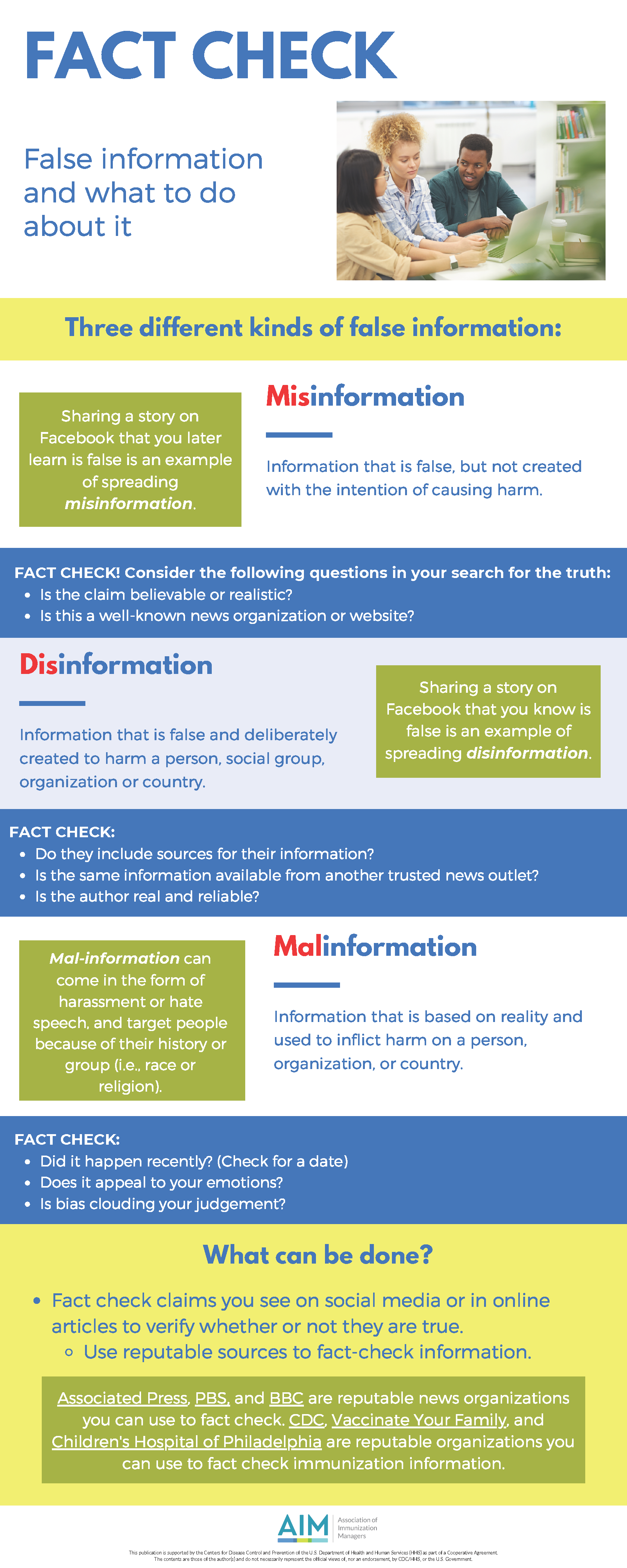
Learn more about false vaccine information and what to do about it. Find more information about false vaccine information and how to address it in AIM’s Vaccine Confidence toolkit.
There are three different kinds of false information:
Misinformation
Information that is false, but not created with the intention of causing harm.
Fact Check!
Sharing a story on Facebook that you later learn is false is an example of spreading misinformation. Consider the following questions in your search for the truth:
- Is the claim believable or realistic?
- Is this a well-known news organization or website?
Disinformation
Information that is false and deliberately created to harm a person, social group, organization, or country.
Fact Check!
Sharing a story on facebook that you know is false is an example of spreading disinformation. Consider the following questions:
- Do they have sources for their information?
- Is the same information available from a trusted outlet?
- Is the author real and reliable?
Malinformation
Information that is based on reality and used to inflict harm on a person, organization, or country.
Fact Check!
Malinformation can come in the form of harassment or hate speech, and target people because of their history or group (i.e., race or religion). Consider the following questions:
- Did it happen recently? (Check for a date)
- Does it appeal to your emotions?
- Is bias clouding your judgement?
What can I do to find credible vaccine information?
Fact check claims you see on social media or in online articles to verify whether or not they are true.
- Use reputable sources to fact-check information.
Reputable sources
- Associated Press, PBS and BBC are reputable news organizations you can use to fact check. CDC, Vaccinate your Family, and Children’s Hospital of Philadelphia are reputable organizations you can use to fact check immunization information.
Download the Infographic
This iREACH infographic describes three different kinds of false information and explains how to fact check information.

